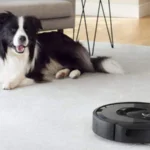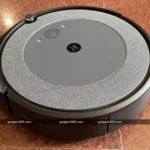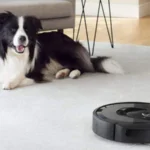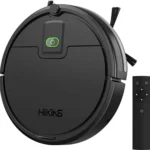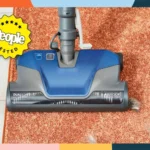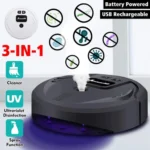Messes Are No Match for Smart Vacuum Cleaners
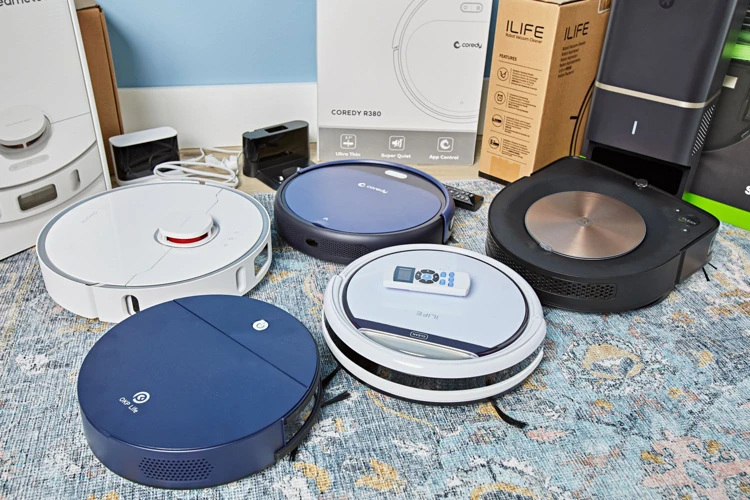
Smart vacuum cleaners are nothing short of wonder machines when it comes to cleaning up all kinds of messes. Whether it’s pet hair, spilled cereal or pesky allergens, smart vacuums can handle them all. With their advanced technology and powerful suction, they make cleaning an effortless and efficient experience.
One of the standout features of smart vacuums is their ability to handle even the toughest messes. Their versatile brushes and powerful suction can effectively remove dirt and debris from all types of surfaces, including carpets, hardwood floors, and even hard-to-reach areas. This multifunctionality is a testament to the effectiveness of these machines, and sets them apart from traditional vacuums.
Smart vacuums come equipped with advanced sensors that are capable of detecting dirt and debris, allowing them to automatically adjust their cleaning power to suit the type of mess they’re dealing with. This means that you can rest assured that your floors will be left looking spotless, regardless of what kind of mess you’re dealing with.
Another great feature of smart vacuums is their navigation system, which allows them to accurately map out a room before cleaning it. This ensures that they clean every inch of your home without missing any areas. This level of accuracy and attention to detail is not possible with traditional vacuums, making smart vacuums a superior choice for those looking for a more efficient and thorough cleaning experience.
In addition to their superior cleaning capabilities, smart vacuums also offer a range of other benefits. They are incredibly convenient and time-saving, allowing you to spend more time doing the things you love rather than cleaning. Plus, their energy efficiency makes them an eco-friendly choice that can help you save on your utility bills in the long run.
Smart vacuum cleaners are a must-have for anyone looking for a quick, efficient and thorough cleaning experience. With their multifunctionality, advanced technology, and range of additional benefits, they are a worthwhile investment that will make cleaning a breeze. Check out our smart vacuum article to learn more about the advantages of smart vacuum cleaning, and discover some of the best smart vacuum cleaners on the market.
How Smart Vacuum Cleaners Work
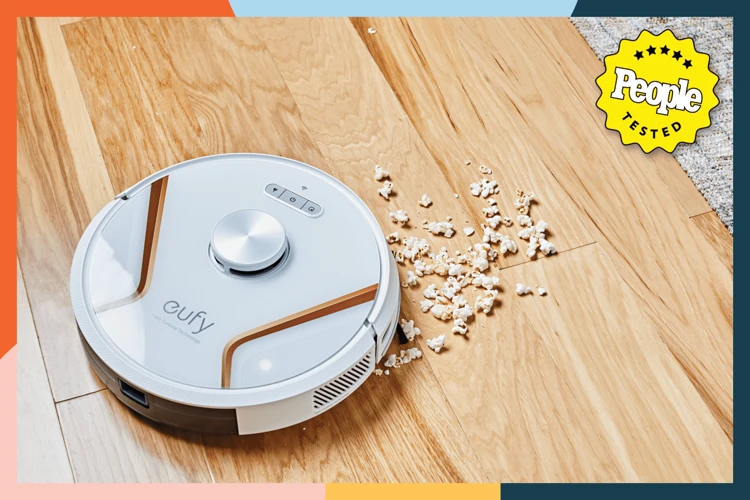
Have you ever wondered how smart vacuum cleaners are able to detect and clean up messes with such efficiency? It’s no magic trick – these ingenious devices rely on advanced sensor technology and smart navigation systems to get the job done. In this section, we’ll take a closer look at the inner workings of these powerful cleaning machines and explore the technology behind them. From the sensors that detect dirt and debris to the navigation system that maps out the room, get ready to be amazed by the capabilities of these modern marvels. And if you want to learn more about the places that smart vacuum cleaners can clean, check out our article on smart vacuum cleaning places.
1. Sensors Detect Dirt and Debris
Smart vacuum cleaners are designed to automate and simplify the cleaning process. One of the most important features of smart vacuums is their ability to detect dirt and debris in the environment they operate in. Sensors are used to scan the floor and detect the presence of dust, dirt, and other debris.
Once the sensors detect dirt and debris, the vacuum starts to work by automatically adjusting its cleaning mode. Different types of sensors are used in smart vacuums, including infrared sensors and acoustic sensors. These sensors are strategically placed on the device to ensure maximum coverage of the cleaning area.
The infrared sensors are used to detect obstacles in the vacuum’s path, while the acoustic sensors can detect even the tiniest particles on the floor. The sensors feed information to the vacuum’s central processing unit, which then creates an accurate map of the cleaning area. This map provides the vacuum cleaner with the necessary information on how to navigate the area, avoiding obstacles, and focusing on high-traffic or high-debris areas.
Smart vacuums use a combination of sensors, navigation systems, and cleaning tools to ensure thorough cleaning. They typically use a combination of brushes, rollers, and suction pumps to collect dirt and debris from the floor. These devices also come with versatile brushes that can be adjusted to clean different surfaces effortlessly.
The sensors in smart vacuum cleaners are essential components that facilitate efficient cleaning. They detect dirt and debris, map out the cleaning area, and provide the vacuum cleaner with the necessary information to navigate the space accurately. The use of sensors in these devices is one of the main reasons why smart vacuums are superior to traditional ones. They offer the convenience of automated cleaning, multifunctionality, and efficiency.
2. The Vacuum’s Navigation System Maps Out the Room
Once the sensors have detected dirt and debris (as explained in the previous section of this article), the vacuum’s navigation system takes over to map out the room and determine the most efficient cleaning path.
The navigation system consists of a variety of sensors, including laser, optical, and infrared, that work together to create a detailed map of the room. The information gathered is then processed by the vacuum’s computer system to determine the most efficient cleaning path.
This mapping technology is also what allows the vacuum to avoid obstacles and navigate through furniture with ease. The vacuum can also detect drop-offs, such as stairs, and will adjust its path to avoid falling.
To make sure no spot is missed, the vacuum will often use a variety of patterns to cover the entire room. This can include straight lines or a zigzag pattern for larger areas, and a circular pattern for smaller, tighter spaces.
The navigation system is a crucial component of any smart vacuum cleaner, allowing for efficient and thorough cleaning.
3. The Vacuum Sucks Up Dirt and Debris
Once the sensors detect the dirt and debris, and the navigation system maps out the room, the smart vacuum cleaner kicks into action. Using powerful suction capabilities, the vacuum effectively sucks up any dirt and debris in its path.
The suction power of a smart vacuum cleaner is a critical factor in its cleaning capabilities. Higher suction power means better cleaning performance, especially when dealing with stubborn or deep-seated dirt and debris. Additionally, smart vacuums use advanced suction technologies, such as cyclonic suction, to ensure that even the smallest particles of dust and dirt are picked up and removed from your floors.
To ensure that your smart vacuum effectively sucks up all the dirt and debris in your home, consider the type of flooring you have. Different flooring types require different suction power, and some smart vacuums have different settings for different types of flooring. For example, a smart vacuum may have a higher suction power for cleaning carpets than for cleaning hardwood floors.
It’s important to note that the suction power of your smart vacuum will decrease over time as the filter gets clogged with dirt and debris. It’s recommended to clean or replace the filter regularly to maintain optimal suction power and cleaning performance.
Smart vacuum cleaners work by using advanced sensors, navigation systems, and powerful suction capabilities to effectively suck up any dirt and debris in your home. By using advanced suction technologies and customizable settings, these vacuums can handle all sorts of messes and keep your home clean and sanitized.
Common Messes that Smart Vacuum Cleaners Can Handle
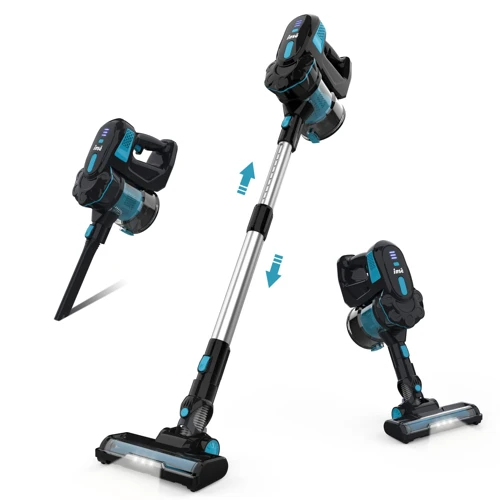
Household messes can be frustrating to deal with, but fortunately, smart vacuum cleaners are equipped to tackle a variety of cleaning challenges. From pet hair to spilled cereals, these advanced cleaning machines can effectively remove unwanted debris and dirt from your floors. They can capture allergens and pollutants that may cause health problems. Let’s discover the common messes that smart vacuum cleaners can effortlessly clean up.
1. Pet Hair
Pet hair can be one of the most challenging messes to clean up, especially for pet owners with shedding animals. Luckily, smart vacuum cleaners are designed to tackle this task with ease.
Sensors within the vacuum detect pet hair on the floor and furniture, while the suction power of the vacuum ensures that hair and dander are effectively removed.
Different vacuum models come with unique features that make them more effective at handling pet hair. For instance, some come with a tangle-free brush roll that prevents hair from wrapping around the brush and hindering the vacuum’s cleaning prowess.
To further illustrate how top-rated vacuum cleaners handle pet hair, the following table highlights some of the best vacuum cleaners for pet hair on the market:
| Vacuum Cleaner | Features |
| Dyson Cyclone V10 Animal | Tangle-free brush roll, 14 cyclones generate forces of more than 79,000g to fling microscopic particles into the bin. Up to 60 minutes’ run time. |
| Shark Navigator Lift-Away Professional | HEPA filtration, brush roll shutoff, anti-allergen complete seal technology. |
| iRobot Roomba i7+ | Power-Lifting Suction, automatic cleaning times, dual multi-surface rubber brushes, Imprint Smart Mapping. |
With these vacuum cleaners and their pet-specific features, pet owners can enjoy a cleaner home free of pet hair and dander. The sensors, suction power, and additional features of these machines make them good investments for pet owners looking for effective mess management tools.
2. Food and Drink Spills
We’ve all been there. You’re hurrying to get breakfast ready for the family, and then all of a sudden, a glass of milk spills on the floor. Or perhaps, you have toddlers who are still learning how to eat without making a mess. Food and drink spills are inevitable, but not to worry, smart vacuum cleaners are more than capable of handling them.
With their powerful suction and advanced features, smart vacuum cleaners can easily pick up even the smallest crumbs and liquid spills. Here are some examples of how smart vacuums can tackle food and drink spills:
- Liquid Detection: Some smart vacuums are equipped with advanced sensors that can detect liquid spills on the floor. Once detected, the vacuum will immediately shift its focus to cleaning up the spill before continuing with its regular cleaning routine.
- Spot Cleaning: For larger spills that require immediate attention, some smart vacuums come with a spot cleaning feature. This allows you to direct the vacuum to the affected area and have it clean up the mess in one go.
- Mapping and Navigation: As mentioned earlier, smart vacuums use advanced navigation systems to map out the room and clean it efficiently. This includes identifying areas with food and drink spills and focusing on them until they are clean.
- Multi-Surface Cleaning: From hardwood floors to carpets, smart vacuums are designed to clean all types of surfaces. This means you can use them to clean up food and drink spills on any floor type without worrying about damage or effectiveness.
- Automatic Cleaning: For those who don’t want to deal with cleaning up a spill manually, some smart vacuums can automatically detect and clean up spills as soon as they happen.
No one wants to deal with cleaning up food and drink spills, but with a smart vacuum cleaner, it’s a lot less stressful. These vacuums are designed to make our lives easier and cleaner, and they do an excellent job of it too. Whether it’s a small spill or a big mess, a smart vacuum will handle it with ease.
3. Dust, Dirt, and Debris
Smart vacuum cleaners are equipped to handle all kinds of messes, including dust, dirt, and debris. These common household nuisances can accumulate quickly and make your living space feel cluttered and dirty. Fortunately, with the right smart vacuum cleaner, you can eliminate the hassle of constantly cleaning up after yourself.
One of the main benefits of smart vacuum cleaners when it comes to combatting dust, dirt, and debris is their powerful suction capabilities. These gadgets are designed to suck up even the smallest particles, leaving your floors and carpets looking and feeling clean.
Smart vacuum cleaners also come with various attachments and accessories that make it easy to clean hard-to-reach areas like corners, baseboards, and underneath furniture. Crevice tools, brushes, and extension wands can all be used to get rid of pesky dirt and debris that may have accumulated in these spaces.
Another advantage of smart vacuum cleaners is their ability to navigate a room with ease. With advanced sensors and mapping technology, these vacuums can effortlessly detect and clean up every speck of dust and piece of debris that may be lurking around your home.
If you have concerns about dust, dirt, and debris in your home, a smart vacuum cleaner is an indispensable investment. With powerful suction, various attachments, and advanced navigation technology, these gadgets can help you achieve a cleaner, healthier living space in no time.
4. Allergens and Pollutants
For those with allergies or sensitivities to dust and dander, smart vacuum cleaners are an excellent choice for reducing allergy and asthma symptoms. These vacuums are equipped with advanced filters that trap all sorts of allergens and pollutants, preventing them from circulating in the air.
Here are some common allergens and pollutants that smart vacuum cleaners can handle:
- Dust mites
- Pollen
- Pet dander
- Mold spores
- Bacteria
- Volatile organic compounds (VOCs)
Smart vacuum cleaners use advanced filtration systems, such as HEPA filters (High-Efficiency Particulate Air filters), to capture even the smallest particles. HEPA filters can trap most airborne particles that can trigger allergies or asthma, including dust, pollen, and mold spores.
Not only do these filters make the air cleaner and healthier, but they also extend the life of the vacuum cleaner by preventing particles from clogging the motor or reducing suction power. Smart vacuum cleaners with HEPA filters are particularly useful for households with pets, as they can trap pet hair and dander that can cause allergic reactions.
Some smart vacuum cleaners have additional features that specifically target allergens and pollutants. For example, some vacuums are equipped with UV-C lights that can kill bacteria and viruses on surfaces, such as hard floors and carpets.
By investing in a smart vacuum cleaner that is designed to handle allergens and pollutants, you can breathe easier and enjoy a cleaner, healthier home.
5. Pesky Pet Accidents
Pets are undoubtedly the most beloved members of the family, but their accidents can be pesky and challenging to clean up. But with a smart vacuum cleaner, there’s no need to stay up all night scrubbing away pet messes. Here are some ways a smart vacuum cleaner can handle pesky pet accidents:
- Stains and spills: Whether it’s urine, vomit, or feces, pet accidents can leave nasty stains and spills on carpets, rugs, and upholstery. But smart vacuum cleaners come equipped with powerful suction and advanced cleaning technology, like spot cleaning mode, to remove even the toughest of stains and spills.
- Odor elimination: Pet accidents can leave behind an unpleasant odor that can be difficult to get rid of. However, smart vacuum cleaners come with advanced filtration systems, like HEPA filters, that can capture pet dander and other pollutants that cause odors. Some models also come with air fresheners that release scents to leave your home smelling fresh and clean.
- Pet hair and fur: Pets shed a lot, and their hair and fur can get everywhere, from carpets and upholstery to hard floors and corners. Smart vacuum cleaners come with specialized pet hair brushes and tools that can pick up pet hair and fur with ease. Some models also come with self-cleaning brush rolls that prevent hair and fur from getting tangled.
- Hard-to-reach places: Pet accidents can occur in hard-to-reach places, like under furniture or in tight corners. But smart vacuum cleaners come with advanced navigation systems, like laser mapping and obstacle detection, that can navigate around obstacles and reach every nook and cranny of your home.
With a smart vacuum cleaner, you no longer have to worry about pesky pet accidents. These devices make cleaning up pet messes quick and easy, leaving your home smelling fresh and clean again. So, if you’re a pet owner, investing in a smart vacuum cleaner is a no-brainer.
6. Hard-to-Reach Places
Smart vacuum cleaners are the perfect solution for cleaning hard-to-reach places that can be challenging to clean by hand. These vacuum cleaners come equipped with advanced features that allow them to easily access and clean tight spaces. Here are some examples of the hard-to-reach places that a smart vacuum cleaner can handle:
- Corners: Traditional vacuum cleaners often have a tough time cleaning corners, but smart vacuums with advanced navigation systems can easily clean these areas.
- Under furniture: Dust and debris have a way of accumulating under furniture, making it a particularly challenging area to clean. However, smart vacuum cleaners with slim designs and advanced sensors can access these areas with ease.
- Ceilings: Cleaning ceilings can be a daunting task, but some smart vacuum cleaners come with attachments and features that allow them to easily clean walls and ceilings, making sure every inch of your home is sparkling clean.
- Stairs: Stairs can be tricky to clean, but smart vacuum cleaners come equipped with features like HEPA filters, powerful suction, and advanced navigation systems that allow them to navigate stairs and clean them effectively.
- Tight spaces: Tight spaces like the gaps between kitchen appliances, can be challenging to clean thoroughly, but smart vacuums with slim designs and flexible attachments can easily access these areas and make sure they’re spotless.
The advanced features of smart vacuum cleaners can help make cleaning hard-to-reach places a breeze. With their powerful suction, advanced navigation systems, and flexible attachments, these vacuums can tackle any mess, no matter where it’s located.
7. High-Traffic Areas
If you have a busy household with high-traffic areas, then you know that keeping these areas clean can be a challenge. Thankfully, a smart vacuum cleaner can handle the task with ease. Here are some ways that these high-tech cleaners can help keep these areas clean:
- Scheduled Cleaning: With the ability to schedule specific cleaning times, smart vacuum cleaners can ensure that high-traffic areas stay clean even during the busiest times of the day. This means that you won’t have to worry about finding the time to clean these areas yourself.
- Dynamic Navigation: Smart vacuums can navigate around obstacles and furniture, allowing them to easily clean high-traffic areas without any hang-ups. They can also easily move from one room to another, ensuring that every area is cleaned thoroughly.
- High Suction Power: When it comes to high-traffic areas, dirt and debris can accumulate quickly. Smart vacuums are equipped with powerful suction capabilities to help remove even the smallest particles of dirt or debris.
- Effective Brush Systems: Many smart vacuum cleaners come with advanced brush systems that can easily tackle dirt and debris in high-traffic areas. From pet hair to dust and debris, these brushes can handle it all.
- Spot Cleaning: If you notice a particularly dirty area, smart vacuum cleaners can be programmed to focus specifically on that area, ensuring that it is cleaned thoroughly.
By utilizing these features, smart vacuum cleaners can effectively handle messes and keep high-traffic areas clean. So if you’re looking for a hassle-free way to maintain the cleanliness of your home, a smart vacuum cleaner is certainly worth considering.
Benefits of Using Smart Vacuum Cleaners
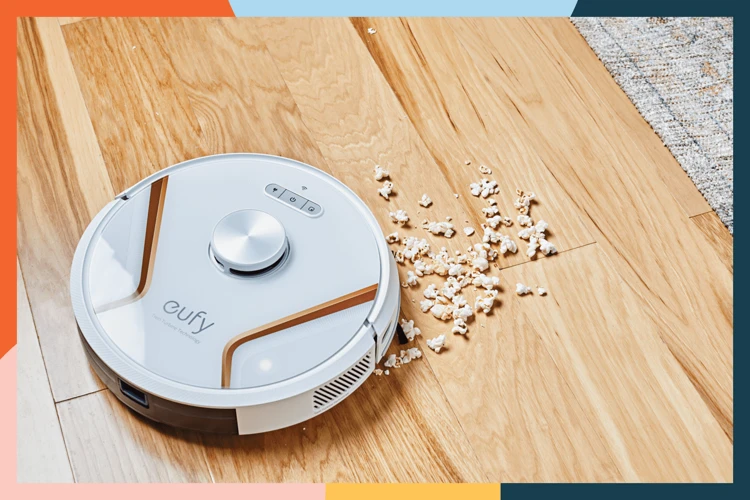
When it comes to keeping our homes clean and healthy, we often think of the tedious task of vacuuming as a necessary evil. But with the advent of smart vacuum cleaners, this chore has become more convenient and efficient than ever before. Not only do they make cleaning a breeze, but they also come with a range of benefits that can improve your overall quality of life. Let’s explore the many advantages of using a smart vacuum cleaner in your home.
1. Convenience
One of the biggest benefits of using a smart vacuum cleaner is the convenience it provides. With busy lives, keeping the home clean can feel like a never-ending task, but a smart vacuum cleaner can make the process much simpler.
Table: Benefits of Convenience
| Benefit | Description |
| Avoids Manual Cleaning | With a smart vacuum cleaner, there is no need to spend precious time and energy manually cleaning floors. The device can be set to clean automatically, with regular schedules, allowing the homeowner to focus on other tasks. |
| Easy Remote Control | Many smart vacuum cleaners come with a remote control or can be controlled through a smartphone app. This makes it easy to start cleaning the floors, even when away from home. It is not necessary to be physically present to begin the cleaning process, offering added convenience. |
| Room Mapping | Smart vacuum cleaners come equipped with sensors and navigation systems that allow them to map out the room, so they know where to clean and where not to clean. Once a floor plan has been determined, the device can work autonomously. This leaves the homeowner free to attend to other tasks while the smart vacuum cleaner gets to work. |
| Hands-Free Dirt Disposal | Many smart vacuum cleaners come with special dirt disposal systems that are simple and easy to empty. Some even have a bin that only needs to be changed every few weeks. This hassle-free operation means there is no need for the homeowner to touch any dirt or debris while emptying the cleaner. |
Smart vacuum cleaners are a convenient solution for busy homeowners. They offer a hands-free approach to cleaning the floors, freeing up time to attend to more important tasks. With easy remote controls, autonomous room mapping, and hassle-free dirt disposal systems, a smart vacuum cleaner provides an effortless solution to floor cleaning.
2. Time-Saving
One of the most significant benefits of using a smart vacuum cleaner is its time-saving feature. With our increasingly busy schedules, it can be challenging to find time to keep our homes clean, especially if we have pets or young children. However, a smart vacuum cleaner can help us save a considerable amount of time.
The following table highlights how smart vacuum cleaners save our time:
| Traditional Vacuum Cleaners | Smart Vacuum Cleaners |
|---|---|
| Requires manual operation | Automatically operates on a schedule or on command |
| Cleaning time depends on the size of the area and the user’s speed | Cleaning time is pre-programmed, saving time and effort |
| Requires users to move furniture and objects to clean under them | Can navigate around obstacles and can get to hard-to-reach places without the need to move furniture or objects |
| May need to be emptied frequently | Has larger dustbins or can self-empty, reducing the need for frequent emptying |
As shown in the table, smart vacuum cleaners can save us time by eliminating the need for manual operation, pre-programmed cleaning times, and the ability to navigate around obstacles. Additionally, they often have larger dustbins or can self-empty, reducing the need for frequent emptying.
A smart vacuum cleaner can help you maintain a clean home while freeing up time for other activities. Whether you want to spend more time with your family, on a hobby, or simply relaxing, a smart vacuum cleaner can help make that possible.
3. Energy Efficient
Smart vacuum cleaners are energy efficient machines that can clean your home with minimal power usage. These vacuums save energy by using advanced technologies that allow them to work smarter, not harder.
Some of the ways in which a smart vacuum cleaner saves energy include:
- Smart sensors that detect when the vacuum has cleaned an area completely, and then move on to the next area, saving time and energy.
- Low-energy motors that are powerful enough to pick up dirt and debris, but use less electricity than traditional motors.
- Programmable settings that allow you to set the vacuum to clean when you’re not home, so it’s not using electricity unnecessarily while you’re there.
- Efficient cleaning patterns that ensure the vacuum does not over-clean a certain area, reducing energy consumption without sacrificing cleaning results.
Additionally, some smart vacuum cleaners come with energy-saving modes that consume even less power. These modes might reduce suction power to save energy, but are still effective enough to clean most surfaces in your home.
Investing in a smart vacuum cleaner is a great way to save energy and reduce your electricity bill, without sacrificing cleanliness. These machines are designed to be efficient and effective, allowing you to clean your home with minimal energy usage.
4. Allergy and Asthma Relief
Smart vacuum cleaners are not only effective in cleaning up messes, but they also bring about several benefits including allergy and asthma relief for those suffering from such conditions. This feature is particularly important as allergies and asthma can be triggered by dust, pollen, pet hair, and other allergens present in the air. Let’s take a look at some of the ways smart vacuum cleaners can help with allergy and asthma relief:
| HEPA filters | Smart vacuum cleaners come equipped with HEPA (High Efficiency Particulate Air) filters that trap allergens and other microscopic particles that can trigger allergies and asthma. These filters can effectively capture 99.97% of particles that are 0.3 microns or larger, making them highly efficient in removing airborne allergens and pollutants. |
| Smart sensors | Some smart vacuums also come with sensors that can detect the level of airborne allergens in the room. With this feature, the vacuum can adjust its suction power and cleaning patterns to ensure that it effectively cleans up allergens present in the air. |
| Smart room mapping | Smart vacuums that use mapping technology can effectively clean up allergens in a more systematic and efficient manner. With precise mapping, they can easily identify allergen hotspots and focus on cleaning those areas more thoroughly, making it easier for allergy and asthma sufferers to breathe easier in their homes. |
By using a smart vacuum cleaner, individuals suffering from allergies and asthma can effectively reduce their exposure to allergens and pollutants, making their homes a safer place for them. With HEPA filters, smart sensors, and mapping technology, smart vacuums can detect and remove allergens in the air, while providing a more thorough and efficient cleaning experience. If you or a loved one suffers from allergies or asthma, investing in a smart vacuum cleaner could be a game changer in providing relief from these conditions.
5. Smart Home Integration
One of the key benefits of using a smart vacuum cleaner is its integration with your smart home system. With this feature, you can control your vacuum cleaner using your smartphone or voice commands, making it easy and convenient to use.
Here are some ways a smart vacuum cleaner can integrate with your smart home:
- Connectivity with smart assistant devices like Amazon Alexa, Google Assistant, or Apple HomeKit:
- Mobile app control:
- Integration with other smart home devices:
- Automatic charging and docking:
With these devices, you can control your vacuum cleaner using voice commands. Simply say something like, “Alexa, turn on the vacuum,” and it will start cleaning up your messes.
Most smart vacuum cleaners come with a mobile app that you can download on your smartphone. This app allows you to start and stop cleaning sessions, schedule cleaning times, and even control the vacuum’s movement.
Smart vacuum cleaners can connect with other smart home devices like thermostats, security systems, and lighting. This means you can set your vacuum to start cleaning when you leave the house or stop cleaning when someone enters the room.
Many smart vacuum cleaners have a docking station that the vacuum returns to when it needs to charge. With smart home integration, you can set the vacuum to start charging automatically when it docks, ensuring that it’s always ready for its next cleaning session.
Smart home integration is just one of the many benefits of using a smart vacuum cleaner in your home. Whether you want to save time, reduce allergens, or clean up pet hair, a smart vacuum cleaner can get the job done effectively and efficiently.
6. Cost-Effective
It’s understandable to think that smart vacuum cleaners would be expensive, but in reality, they can actually be quite cost-effective. Here are a few reasons why:
- Smart vacuums save time and energy, reducing the need for cleaning services or constantly replacing traditional vacuums.
- By targeting specific areas and avoiding unnecessary cleaning, smart vacuums can help save on electricity costs.
- Investing in a quality smart vacuum can also prevent the need for constant maintenance and repair costs of traditional vacuums.
- With long-lasting battery lives, smart vacuums won’t need to be constantly charged, saving on energy costs.
- Smart vacuums often come with additional features that can replace the need for separate cleaning tools, such as mops or dusters.
- While the initial cost of a smart vacuum may be higher than a traditional vacuum, the long-term cost savings and convenience make it a smart investment.
So, if you’re looking for a cost-effective solution to your cleaning needs, a smart vacuum cleaner may be the way to go. Not only will it save you time and energy, but it can also help you save money in the long run.
How to Choose the Right Smart Vacuum Cleaner for Your Needs
Choosing the perfect smart vacuum cleaner can be a daunting task, especially with so many options available in the market. There are numerous factors to consider, from the type of vacuum to the additional features it provides. And all this while keeping your budget in mind. But don’t worry, we’ve got you covered. In this section, we’ll explore the key factors that you need to keep in mind while choosing a smart vacuum cleaner that caters to all your cleaning needs. So, let’s jump in and decipher the world of smart vacuum cleaners.
1. Type
When choosing a smart vacuum cleaner, the first factor to consider is the type. There are several types of smart vacuum cleaners available on the market, each with its own strengths and weaknesses. Here are the most common types to help you decide which one suits your needs:
| Type | Description | Advantages | Disadvantages |
|---|---|---|---|
| Robot | This type of smart vacuum cleaner is designed to automatically navigate your home and clean your floors. It uses sensors and a navigation system to move around your home and vacuum up dirt and debris. | Convenient, time-saving, can reach tight spaces, good for daily cleaning. | Can be expensive, may require maintenance, may not perform as well on large debris or high-pile carpets. |
| Stick | This type of smart vacuum cleaner is lightweight and easy to maneuver. It is great for cleaning hard-to-reach spaces and can be used on both carpets and hard floors. | Easy to use, can be stored in small spaces, good for quick cleanups, can be less expensive than other types of smart vacuums. | May not have as much suction power as other types of vacuums, may require frequent battery charges. |
| Canister | This type of smart vacuum cleaner has a separate canister that holds the motor and bag. The canister is connected to the vacuum head by a hose, making it easy to maneuver. | Powerful suction, good for cleaning stairs and tight spaces, can be used on both carpets and hard floors. | Bulky and heavy, may be difficult to store, can be more expensive than other types of smart vacuums. |
As you can see, each type of smart vacuum cleaner has its own set of advantages and disadvantages. Consider your home’s layout, flooring type, and cleaning needs when choosing the type of smart vacuum cleaner that’s right for you.
2. Suction Power
When choosing a smart vacuum cleaner, one of the most important considerations is the suction power it offers. The suction power refers to the strength of the vacuum’s motor, which determines how effectively it can pick up dirt, debris, and other messes. It’s important to keep in mind that higher suction power doesn’t always translate to better cleaning, as other factors such as brush design and filtration play a role as well. However, a more powerful motor can help ensure that your floors are thoroughly cleaned.
To help you compare different smart vacuum cleaners based on their suction power, we’ve put together the following table:
| Smart Vacuum Model | Suction Power (in watts) |
|---|---|
| Xiaomi Mi Robot Vacuum | 1800 |
| Shark IQ Robot Self-Empty™ XL RV1001AE | 1700 |
| iRobot Roomba i7+ | 1700 |
| Eufy RoboVac 11S | 1300 |
| Dyson Cyclone V10 Absolute | 1510 |
| Ecovacs Deebot N79S | 1000 |
As you can see, the suction power of different smart vacuum cleaners can vary widely. Some models, such as the Xiaomi Mi Robot Vacuum and the Shark IQ Robot Self-Empty™ XL RV1001AE, offer particularly strong suction power at 1800 and 1700 watts, respectively. Other models, such as the Ecovacs Deebot N79S, have a less powerful motor at 1000 watts.
Before choosing a smart vacuum cleaner based solely on suction power, however, it’s important to consider other factors as well, such as the type of flooring in your home, the size of the room you will be cleaning, and any additional features that may be important to you. By considering all of these factors together, you can select a smart vacuum cleaner that will keep your home clean and free of messes with minimal effort on your part.
3. Navigation System
When it comes to choosing a smart vacuum cleaner, the navigation system plays a crucial role in its performance. A good navigation system ensures that the vacuum covers every inch of your floor and leaves behind no dirt or debris.
There are several types of navigation systems available in the market:
| Navigation System | Description |
|---|---|
| Random Navigation | This type of navigation system operates haphazardly and covers the area randomly. It does not follow any specific cleaning pattern and may sometimes miss certain areas. |
| Reactive Navigation | Reactive navigation systems use sensors to detect obstacles and navigate around them. They can clean around furniture and other objects without bumping into them. |
| Visionary Mapping | These navigation systems use cameras or lasers to map out the room and create a virtual map. They follow an organized cleaning pattern and leave no area untouched. |
| Remote Control Navigation | Remote control navigation allows you to control the movement of your vacuum with a remote control. This is useful for cleaning specific areas or for spot cleaning. |
When choosing a navigation system, consider the following:
- Size and layout of your home
- Types of flooring surfaces
- Amount of furniture and obstacles in the cleaning area
- Your personal needs and preferences
It’s important to note that a vacuum with a better navigation system may come at a higher price point. However, investing in a good navigation system can result in a more efficient and thorough cleaning process.
4. Battery Life
When considering a smart vacuum cleaner, it’s important to think about the battery life. A long battery life means more cleaning time between charges. Here are some factors to consider when it comes to battery life:
- Battery Type: Different vacuum cleaners use different battery types, such as nickel-cadmium or lithium-ion. Li-ion batteries are lighter, more efficient, and have a longer lifespan.
- Battery Capacity: The battery capacity is measured in milliampere-hours (mAh), and generally, a higher mAh rating means a longer battery life.
- Charging Time: Look for a vacuum cleaner that has a quick charging time. Some smart vacuums can charge fully in just a few hours, while others take much longer.
- Runtime: The runtime of a vacuum cleaner is the amount of time it can operate on a single charge. Look for a vacuum that can run for at least an hour or two without needing to be recharged.
- Battery Indicator: Having a battery indicator on your smart vacuum cleaner will let you know when it needs to be recharged. Some vacuums have a visual display, while others use alerts, such as beeps or flashing lights.
A smart vacuum cleaner’s battery life should be one of the main factors you consider when purchasing one. You want a vacuum cleaner that can clean your entire floor without needing to be recharged multiple times. Keep in mind that the larger your home, the longer battery life you’ll need.
5. Additional Features
When it comes to choosing a smart vacuum cleaner, it’s important to consider any additional features that may be included. These can significantly enhance the performance and usability of a vacuum cleaner. Here are some features to look out for:
- HEPA Filter: A high-efficiency particulate air (HEPA) filter can help to remove allergens, dust, and other pollutants from the air. This is especially important for those with allergies or respiratory issues.
- Edge Cleaning: Some smart vacuum cleaners have the ability to clean along edges and corners, where dust and debris tend to accumulate.
- Multiple Cleaning Modes: Different cleaning modes, such as spot cleaning or edge cleaning, can suit different cleaning needs and preferences.
- Voice Control: For those with smart homes, voice control capabilities can be a convenient feature.
- Self-Cleaning Brush Roll: A self-cleaning brush roll can prevent hair and debris from getting tangled and reduce the need for manual cleaning.
- Automatic Charging: Some smart vacuum cleaners can automatically return to their charging station when the battery is low, providing added convenience.
- Mobile App Control: A mobile app can allow users to control and customize their vacuum cleaner from their phone.
By considering these additional features, you can choose a smart vacuum cleaner that not only meets your basic cleaning needs but also provides added benefits and convenience.
6. Budget
When it comes to buying a smart vacuum cleaner, budget is definitely a consideration. There are a range of options available at different price points, from budget-friendly to high-end models. Here are some factors to consider when determining what fits within your budget:
- Brand: Some brands may be more expensive due to their reputation and features offered.
- Type: Robotic vacuums may be more expensive than traditional models due to their advanced technology and unique features.
- Suction Power: Higher suction power may come with a higher price tag, but may be worth the investment for those with pets or high-traffic areas.
- Navigation System: Models with advanced navigation systems may be more expensive, but they can be more efficient and effective in cleaning your home.
- Battery Life: Models with longer battery life may cost more, but they can be more convenient and effective in cleaning your home.
- Additional Features: Some models come with extra features such as HEPA filters, UV sterilization, or integration with smart home devices, which may increase the price.
It’s important to keep in mind that a higher price doesn’t always mean better quality. Do your research, read reviews, and compare models before settling on one that fits within your budget and has the features that are most important to you. With the right smart vacuum cleaner, you can save time and effort while keeping your home clean and tidy.
Conclusion
After exploring the various benefits and capabilities of smart vacuum cleaners, it’s clear that they have revolutionized the way we clean our homes. These high-tech devices can handle all sorts of messes with ease, making our lives more convenient and stress-free.
Whether you have pets or not, smart vacuum cleaners can effectively pick up pet hair, dander, and any other pesky allergens that may be lurking in your home.
In addition to that, smart vacuum cleaners can handle food and drink spills, dust, dirt, debris, and even pet accidents. Plus, with their ability to reach hard-to-reach places and high-traffic areas, you can be sure that your home is getting the thorough clean it needs.
Not only are smart vacuum cleaners energy efficient, but they also offer time-saving benefits. With the ability to schedule cleaning sessions and the convenience of app control and smart home integration, keeping your home clean has never been easier.
When it comes to choosing the right smart vacuum cleaner for your needs, there are a few factors to consider, including the type of cleaner, suction power, navigation system, battery life, additional features, and budget.
In conclusion, if you’re looking for a convenient, efficient, and effective way to keep your home clean, a smart vacuum cleaner is an excellent investment. With their advanced features and capabilities, your daily cleaning routine will be a breeze, leaving you with more time to enjoy life’s other pleasures. So why not invest in a smart vacuum cleaner today and experience the benefits for yourself?
Frequently Asked Questions
1. Can smart vacuum cleaners clean multiple floors?
Yes, most smart vacuum cleaners are equipped with sensors that allow them to navigate to different floors and clean them effectively.
2. Are smart vacuum cleaners noisy?
No, smart vacuum cleaners are designed to be quiet and produce less noise than traditional vacuum cleaners.
3. Can smart vacuum cleaners clean carpets?
Yes, most smart vacuum cleaners have strong suction power that allows them to clean carpets and remove dirt and debris effectively.
4. What happens if my smart vacuum cleaner encounters obstacles?
Smart vacuum cleaners have sensors that detect obstacles and navigate around them without getting stuck.
5. How often does the dustbin need to be emptied in a smart vacuum cleaner?
The frequency of emptying the dustbin depends on the usage of the smart vacuum cleaner. Most models come with sensors that notify users when the dustbin is full.
6. Can smart vacuum cleaners be scheduled to clean at specific times?
Yes, most smart vacuum cleaners come with a scheduling feature that allows users to choose specific times for the device to clean.
7. Do smart vacuum cleaners have filter systems?
Yes, most smart vacuum cleaners are equipped with high-efficiency filter systems that remove allergens and pollutants from the air while cleaning.
8. Can smart vacuum cleaners be controlled with a mobile app?
Yes, many smart vacuum cleaners have mobile apps that allow users to control and monitor the device remotely.
9. What is the average battery life of a smart vacuum cleaner?
The battery life of a smart vacuum cleaner varies depending on the model and usage. Most models have a battery life of 60-90 minutes on average.
10. Are smart vacuum cleaners more expensive than traditional vacuum cleaners?
Yes, smart vacuum cleaners are generally more expensive than traditional vacuum cleaners because of their advanced technology and features.

